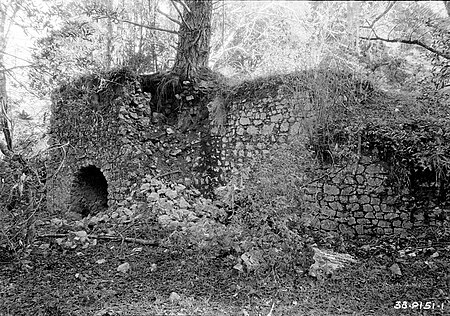Olema Lime Kilns

The Olema Lime Kilns at Point Reyes National Seashore in California were built in 1850 on land leased from Mexican grantee Rafael Garcia by James A. Shorb and William F. Mercer, two San Francisco entrepreneurs. The kilns were reportedly fired only a few times, and have lain abandoned for some 140 years. They were apparently abandoned no later than 1855 after only a few firings, probably due to the poor quality, small limestone deposits and the financial depression of that year. They represent a Gold Rush era effort to establish a lime-producing industry in Marin County, only two years after cession of Alta California to the United States by Mexico. They consist of three long-abandoned, barrel-shaped stone vaults lying in ruins against a hillside on the east side of Olema Creek about five miles south of Olema and about 100 yards west of California State Highway 1.
Excerpt from the Wikipedia article Olema Lime Kilns (License: CC BY-SA 3.0, Authors, Images).Olema Lime Kilns
Shoreline Highway,
Geographical coordinates (GPS) Address Nearby Places Show on map
Geographical coordinates (GPS)
| Latitude | Longitude |
|---|---|
| N 37.988333333333 ° | E -122.74611111111 ° |
Address
Shoreline Highway
Shoreline Highway
94950
California, United States
Open on Google Maps





